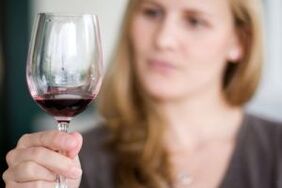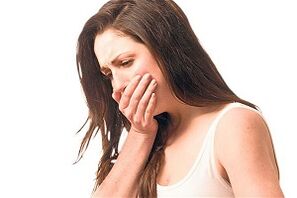What happens if you throw a glass or two of alcohol after taking an antibiotic pill? When can you drink alcohol, how many hours or days after antibiotics can you drink alcohol to avoid harm to your health?
Antibiotics and alcohol
The obligatory consequence of the use of alcohol and antibiotics is a decrease in the effectiveness of treatment. When alcohol is consumed, inflammatory processes in the intestines develop and local immunity is reduced.
At the same time, antibiotic-related disorders in the gut increase with the intake of antibiotics.
Violation of drug concentration

The antibiotic begins to act after reaching a sufficiently high therapeutic concentration in the blood. Because the same alcohol is taken, the amount of drug in the body decreases.
Such drugs can be considered meaningless and even dangerous when trying to take antibiotics after alcohol.
Disruption of the treatment regimen, a decrease in the concentration of the drug, helps to increase the resistance of pathogenic microflora to the effects of antibiotics. The disease itself, which is prescribed antibiotics, has a chance to become acute or chronic.
The concentration of the drug decreases due to disruption of the reabsorption of nutrients in the renal tubules by the nephrotoxic metabolite of ethyl alcohol acetaldehyde.
Water reabsorption is also impaired, which increases the viscosity of the blood, and the concentration of the antibiotic in the blood can change in the most unexpected way.
Features of metabolism
Antibiotics are drugs that are metabolized in the liver. The liver, which processes ethyl alcohol, does not have time to neutralize all possible products of the drug's intermediate metabolism.
In addition, ethanol can affect the activity of liver enzymes and may even react directly with antibiotics or its metabolites. These properties are expressed differently in antibacterial drugs.
One of the most dangerous features of combining a drug with ethyl alcohol is the interaction of these chemical compounds with the development of a disulfiram-like reaction.
Let's understand whether it is possible not to drink alcohol, beer, antibiotics, then it is not dangerous to drink alcohol, and then it is not possible at all.
Disulfiram-like reaction

The disulfiram reaction is used to encode alcoholism accompanied by nausea, seizures, cough, vomiting, shortness of breath, and decreased blood pressure.
A similar effect occurs very often when taking drugs with ethanol.
Below is a list of which antibiotics you should take and how much alcohol you should not drink.
The results of taking ethanol during antibiotic treatment depend on the dose.
You can drink alcohol after injecting pills or antibiotics - these are calculated based on the time it takes for the antibiotic to be expelled from the body.
List of antibiotics
Do not use with alcohol:
- nitroimidazoles - do not combine with alcohol for up to 48 hours (drugs have a disulfiram-like reaction);
- Cephalosporins - the chemical structure of this group is similar to a disulfiram molecule that reacts with ethyl alcohol to disulfiram. You can drink alcohol every day, intermediate stretches with kidney failure;
- fluoroquinolones - synthetic antibiotics that inhibit the nervous system and can cause coma. Drink alcohol no later than 1, 5 days;
- Tetracyclines - a high risk of damage to hepatocytes in the liver is eliminated from the body for a long time. You can drink alcohol after 3 days;
- Aminoglycosides are ototoxic, nephrotoxic, increase drug side effects, increase drug toxicity. Drink alcohol not earlier than 0, 5 months;
- lincosamides - affects the central nervous system and liver, develops a disulfiram reaction. You can drink alcohol 4 days after treatment;
- macrolides - increase the risk of liver cirrhosis, especially when erythromycin is slowly eliminated from the body. Alcohol is allowed after 3, 5 days;
- anti-tuberculosis drugs can cause drug-associated hepatitis with a fulminant course. Alcoholic beverages are prohibited!
The rate at which antibacterial drugs are excreted from different parts of the body varies. Thus, in adults, aminoglycosides are removed from the blood in an average of 2. 5 hours, while in the inner ear fluid this time can be up to 350 hours.
Given the ototoxicity of aminoglycosides, it is easy to understand that drinking alcohol for 2 weeks after treatment can cause deafness.
Communication
In antibiotic treatment and alcohol consumption, a disulfiram-like reaction develops because it inhibits the synthesis of enzymes that destroy the ethanol molecule into simpler substances.
The result is an increase in the concentration of ethyl alcohol - the intermediate product of the breakdown of acetaldehyde in the blood. Ethanol metabolite acetaldehyde is more toxic than ethyl alcohol itself.
Lack of liver enzymes due to toxic effects on the liver leads to a decrease in the synthesis of norepinephrine, so the next morning the symptoms of intoxication appear brighter and more difficult to tolerate.
Impacts

The combination of alcohol with drugs in small doses may not be visible, but when consuming large amounts of alcohol, the side effects of both drugs and ethyl alcohol increase.
One of the most dangerous consequences of combining alcohol with antibiotics is a disulfiram-like reaction. The danger of this situation is that it is masked by alcohol poisoning and is not recognized by others as a signal of concern.
The disulfiram reaction is caused by an increase in the concentration of acetaldehyde in the blood and manifests itself with the following symptoms:
- heartbeat;
- nausea, vomiting;
- tide, feeling of warmth;
- dizziness;
- stomach pain;
- sharp drop in pressure.
If a patient's blood alcohol level is higher than 125 mg / 100 ml and the victim is not treated in time, a fatal outcome is possible.
How to combine
Some drugs can not be combined with ethyl alcohol in any dose:
- nitroimidazoles;
- group of cephalosporins;
- fluoroquinolones;
- aminoglycosides.
How many days after antibiotics can you take alcohol, can you interrupt the course of treatment for a while?
It is better not to combine alcohol with antibiotics and not to take ethanol during treatment. If for some reason this is not possible and you need to consume alcohol, you can use a special alcohol calculator to calculate how long you will take antibiotics after alcohol.
The alcohol calculator takes into account a person's weight, the amount and strength of the drink. Thus, for men weighing 70 kg, 100 g of vodka will be completely eliminated from the body in 5. 8 hours, and 200 g of beer in 1. 44 hours.
It should be noted that all these calculations are approximate, and the actual rate of excretion from the body depends not only on the characteristics of these chemical compounds, but also on the condition of the kidneys, intestines and liver.
Speech
It should take between 1 and 3, 5 - 5 days for the antibacterial drug to be completely eliminated from the body. The duration of elimination depends on the state of health, age, the characteristics of a person's metabolism.
In most cases, drinking alcohol while taking a course of antibiotics weakens the effect of treatment, increases the side effects of the drug, causes a disulfiram-like reaction and is fraught with serious consequences.































